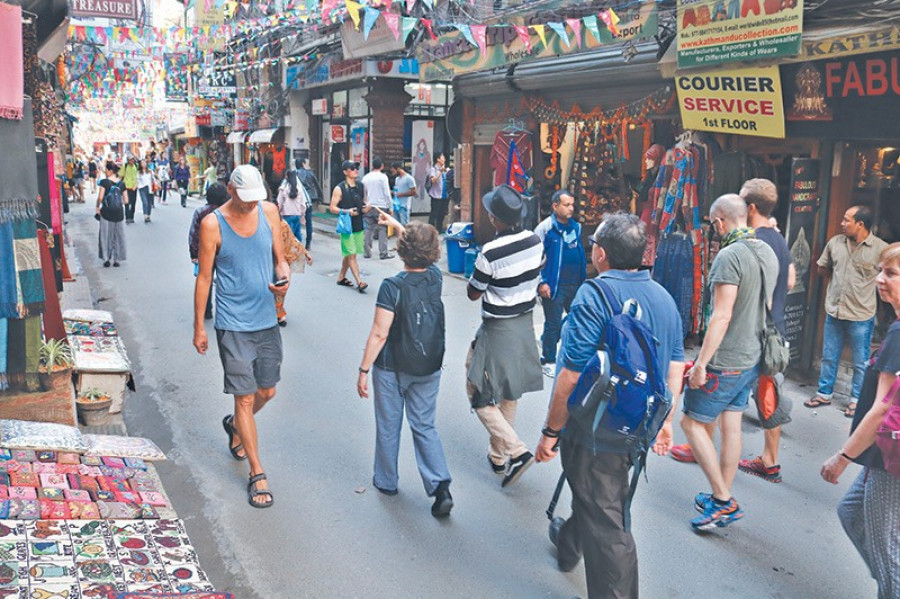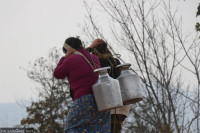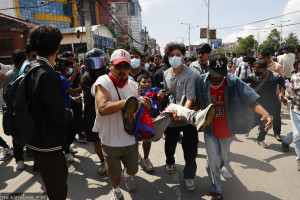Editorial
Win or loos: Nepal needs to invest in more public toilets
The lack of toilets in Thamel is symptomatic of a larger issue—of the lack of focus on public hygiene.
It has been estimated that over 800,000 foreign tourists pass through Thamel in Kathmandu every year—at a rate of 3,000 tourists every day. Add to that the numerous residents, business operators, service sector employees and local tourists and patrons who visit the neighbourhood on a daily basis. Yet, decades since the spot has solidified itself as a hangout spot and travel hub in Kathmandu Valley, if not Nepal, the area has no public toilet facilities. And it seems that the area is a long way away from getting such facilities too.
The lack of public lavatories in such a popular area is worrisome. If tourists and visitors have to keep relying on private bathrooms, it is not only inconveniencing for everyone involved but also puts undue pressure on privately managed and funded washrooms. Worse, if the people start to relieve themselves on the streets, for the lack of proper facilities and as many people are known to do, it creates an unnecessary burden on the already failing public health system.
The concerned authorities need to step up on forming a solution immediately. For Thamel, this would typically be a collaborative process between the respective ward offices, Kathmandu Metropolitan City, Thamel Tourist Development Council and the federal and provincial departments of Tourism, among others. There can be no claims of the lack of investment or the unavailability of land. With Thamel attracting so much of the hospitality and service sector revenue, the money needed will follow the will to see the installation and management of public lavatories through.
Sanitation is an important part of keeping the public healthy and happy. The lack of lavatories is not only an issue of providing safe private spaces for people to do the business. It is about the proper disposal of urine, faeces and hygiene products—and access to a way to maintain hand hygiene.
According to The Economist, in India, one in ten deaths ‘is linked to poor hygiene standards’ and over 44 million children have stunted growth due to diarrheal diseases. While the situation may not be as bad in Nepal, it is getting there. Although the country has an anti-open defecation programme—called the Sanitation and Hygiene Master Plan—and 63 districts have been named open defecation free, there is a larger problem underfoot. For example, although Kathmandu Valley is thought to be open defecation free—there is only one functioning toilet for 46,000 people in the valley. Moreover, in the entire valley, there are only 65 public toilets.
If the problem is this bad in the Capital, other areas of the country have it worse. There has to be sincerity in reporting of the true impact and outcome of the Sanitation and Hygiene Master Plan—having one functioning lavatory for almost fifty thousand is surely not this project’s aim. But in places like Thamel, the urgency is even greater. When private toilets become open for public use without reciprocal returns, owners tend to put less focus on maintaining hygiene. In an area that receives visitors from all around the world, carrying germs of all kinds, the need for an adequate number of clean and well-maintained public toilets cannot be overstated. The problem needs to be rectified.
***
What do you think?
Dear reader, we’d like to hear from you. We regularly publish letters to the editor on contemporary issues or direct responses to something the Post has recently published. Please send your letters to [email protected] with "Letter to the Editor" in the subject line. Please include your name, location, and a contact address so one of our editors can reach out to you.




 16.12°C Kathmandu
16.12°C Kathmandu














